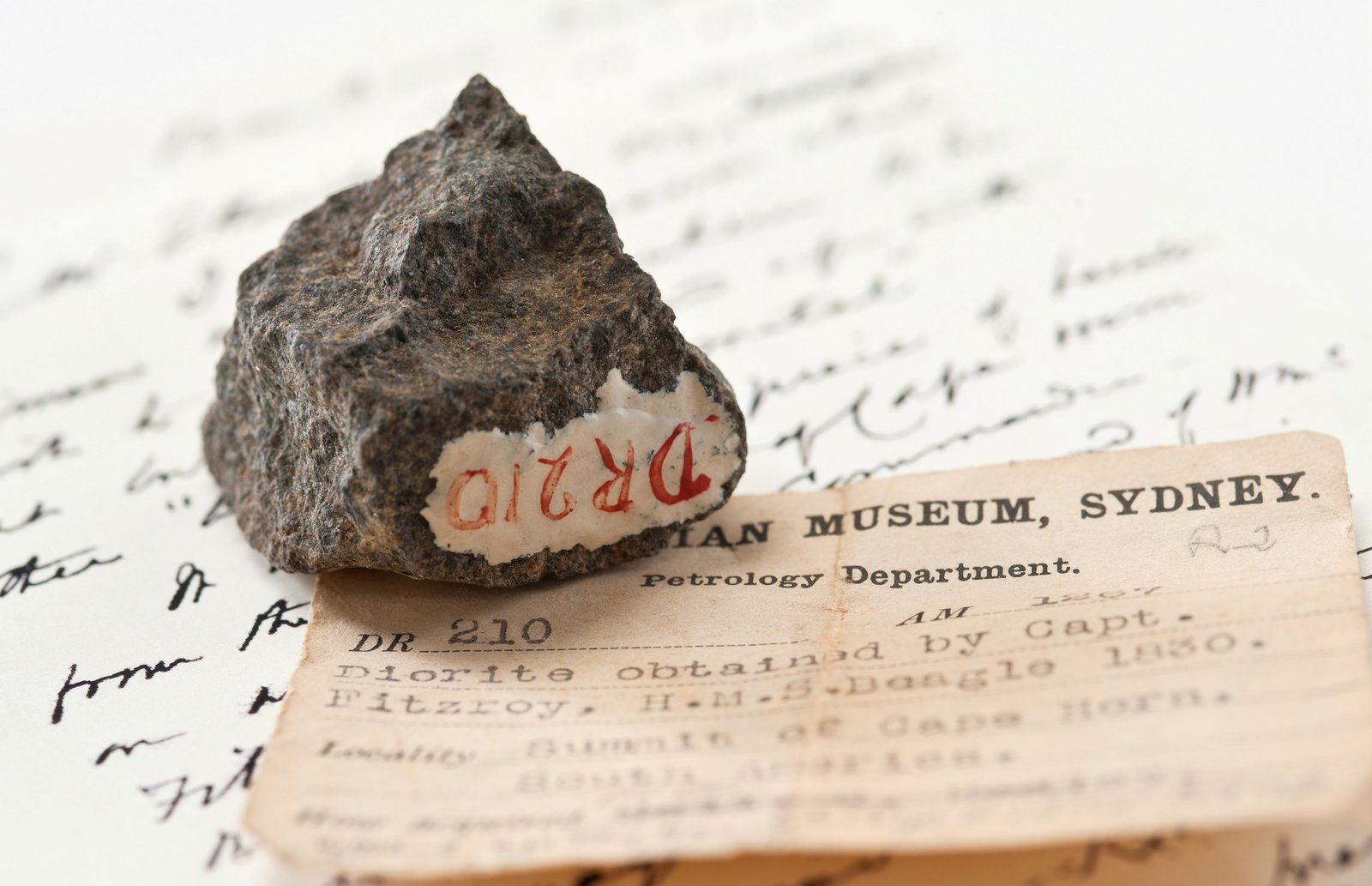A Rock from Cape Horn
On this page...
On 22 May 1826, two ships sailed from Plymouth, England on a major expedition to chart the southern coast of South America. The first was HMS Adventure, commanded by the Senior Officer in charge of the expedition, Captain Philip Parker King. The second ship was HMS Beagle, commanded by Captain Robert Fitzroy.
Both ships reached the vicinity of Cape Horn on the southern-most tip of South America in early 1830. Captain King and the Adventure continued to chart the Chilean coast and Tierra del Fuego while Captain Fitzroy and the party from the Beagle stopped to climb Cape Horn. The latter group reached the summit of Cape Horn on 20 April 1830, collecting many pieces of diorite rock. The two ships returned to England with their cargoes of natural history specimens, and Captain King returned to New South Wales a few years later.

© Australian Museum
The specimens collected by the Adventure and the Beagle, including the Cape Horn rocks, were destined to remain in English collections. One small piece of diorite collected by Captain Fitzroy was presented to Captain King and remained in King's family as a curio.
Captain King's son, Phillip Gidley King, wrote to the Director of the Australian Museum, Robert Etheridge Jnr in December 1889, offering to donate his father's memento. King's letter is preserved in the Australian Museum Archives and makes amusing reading. Etheridge called on King almost immediately to accept the specimen, which still remains in the Museum collection and may be the only geological specimen from this expedition in Australia.
The Cape Horn specimen brings to life an age of adventure and hazardous sea voyages, and represents a long chain of events which eventually brought it into our collection.

